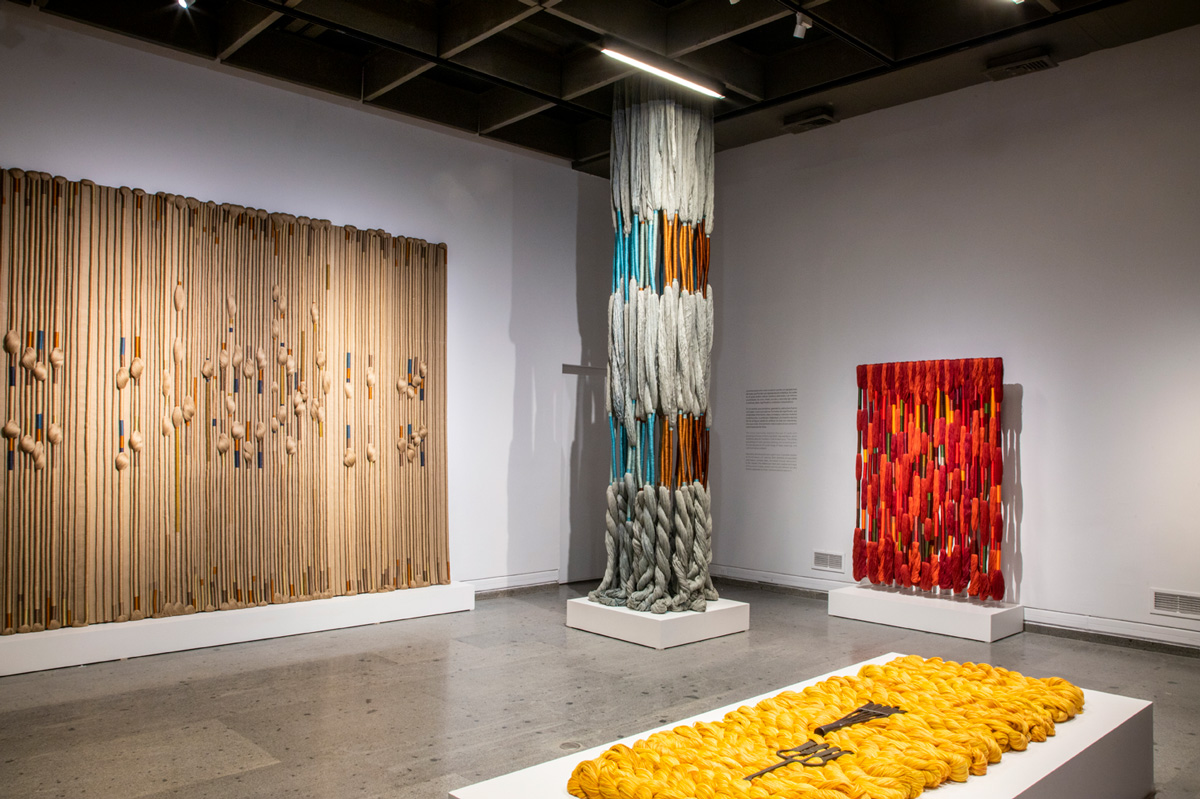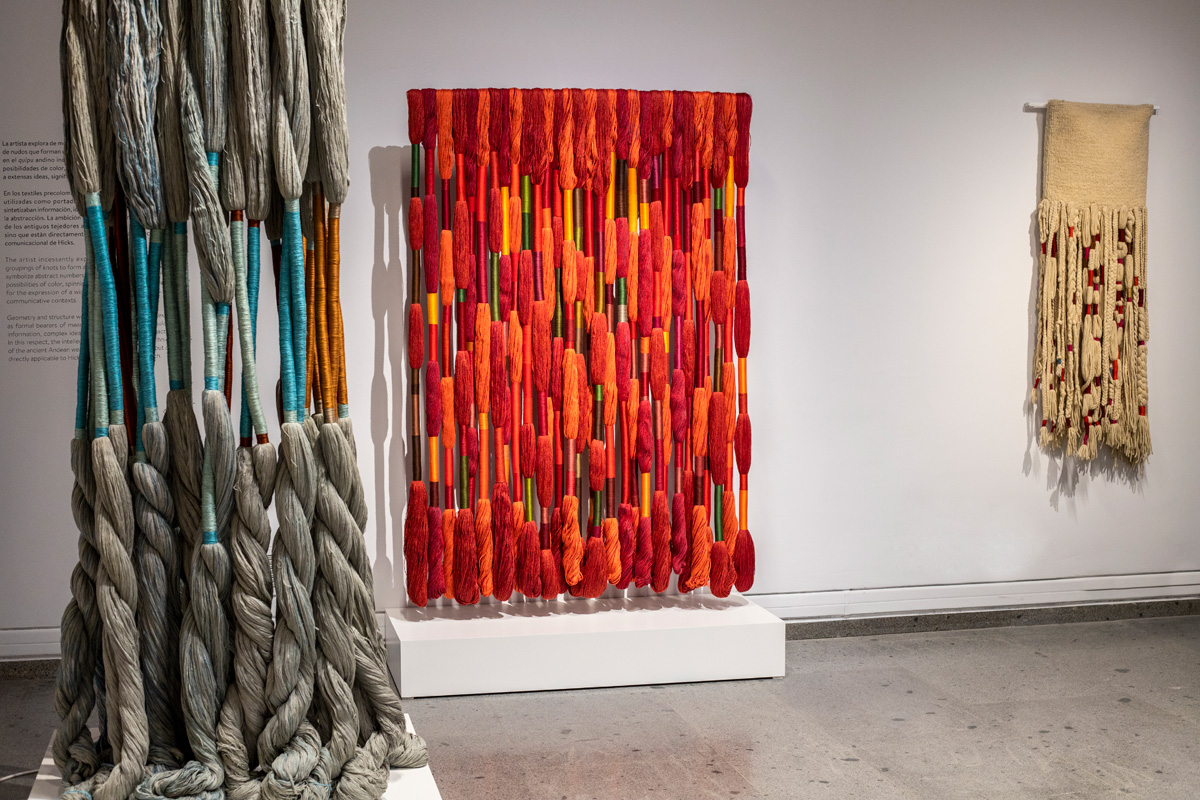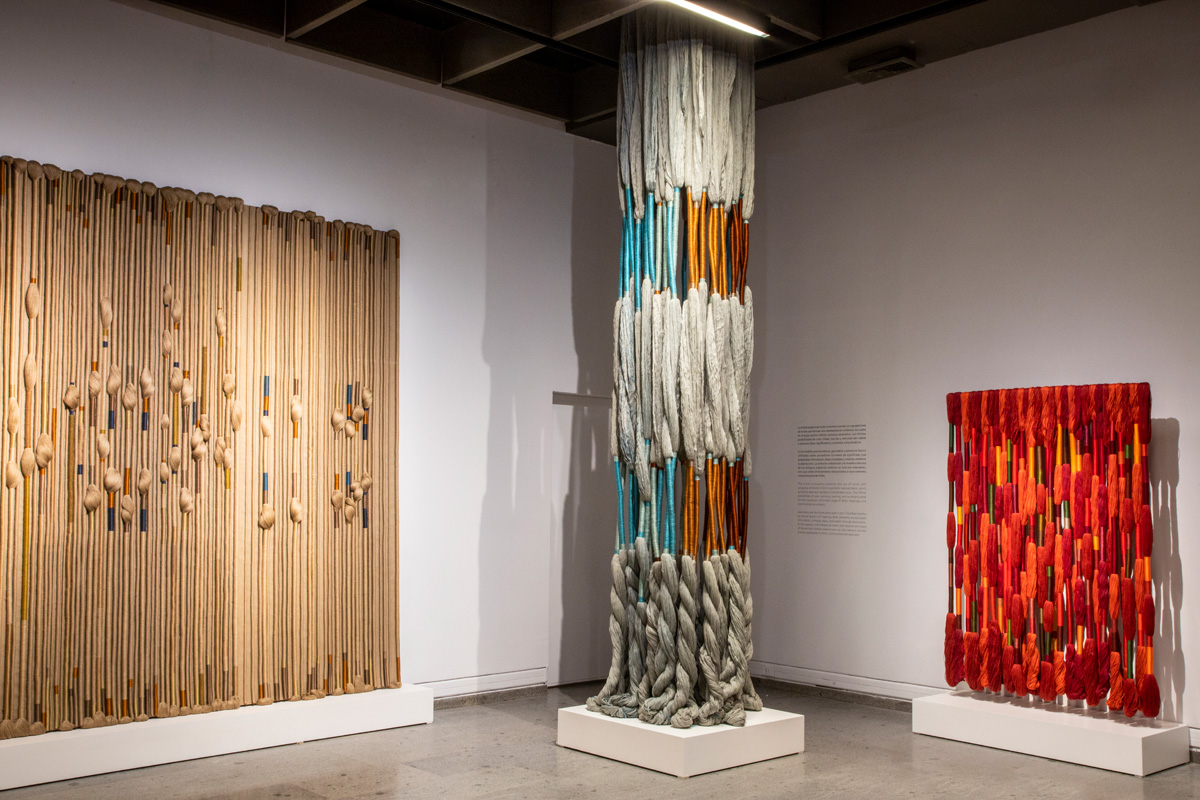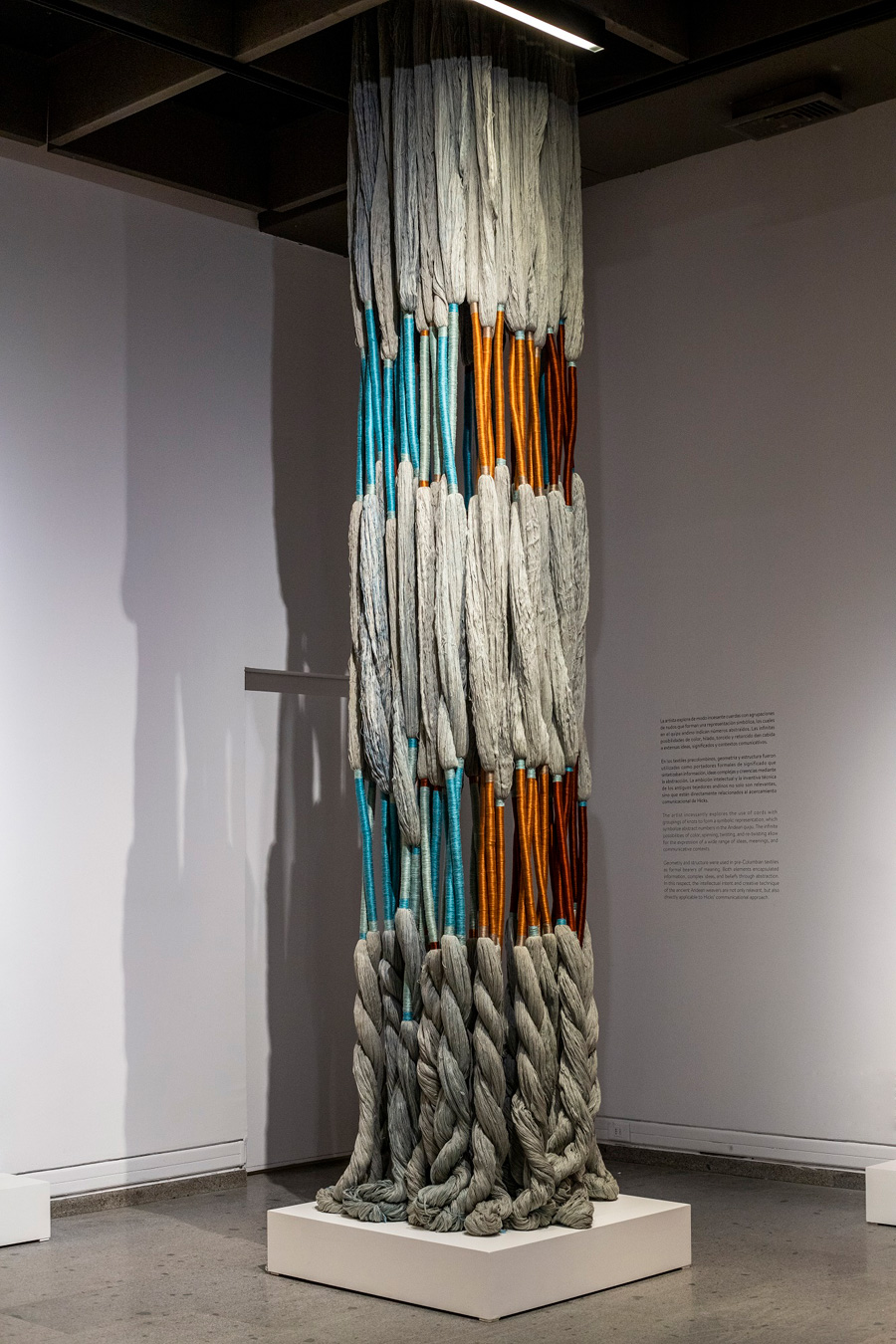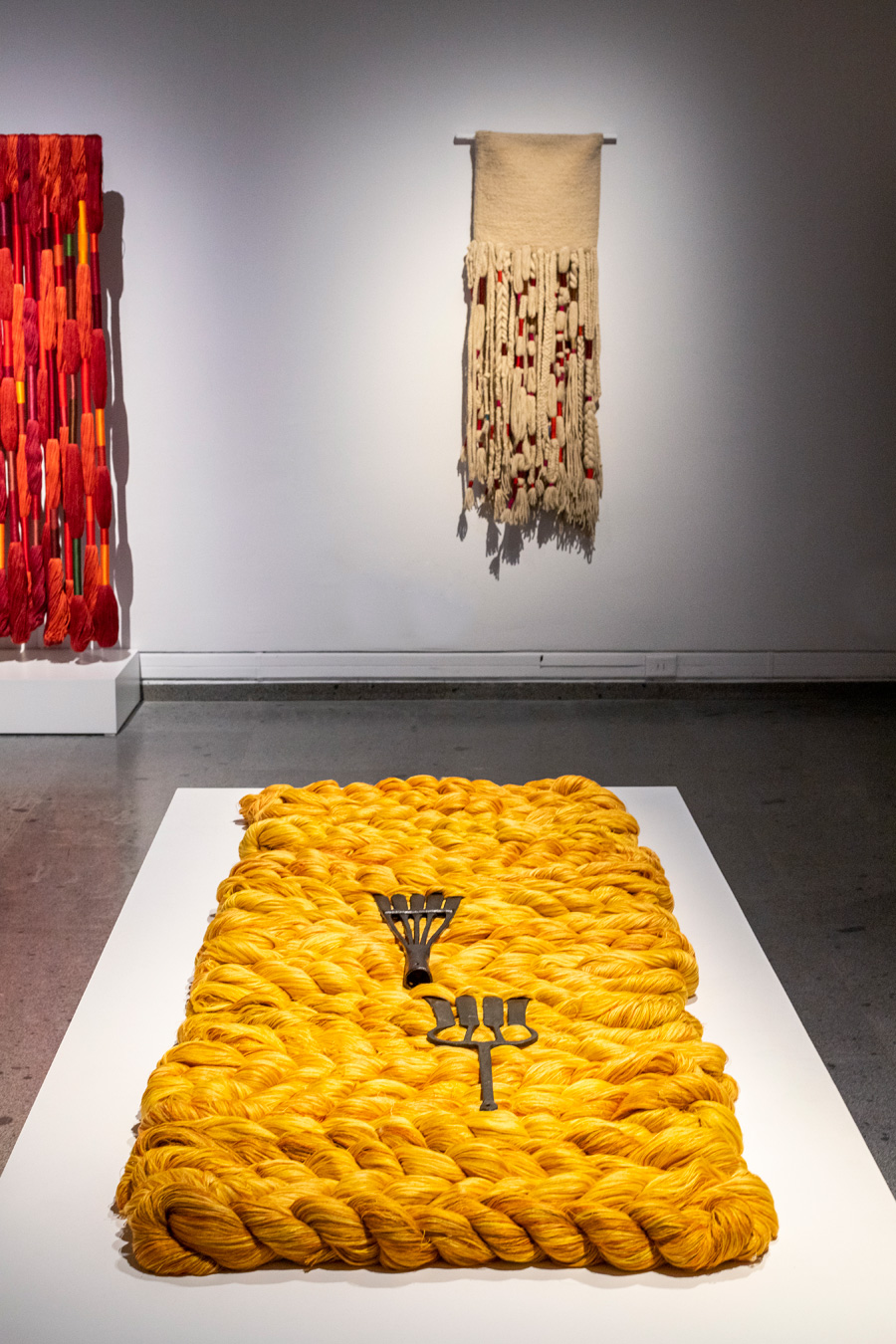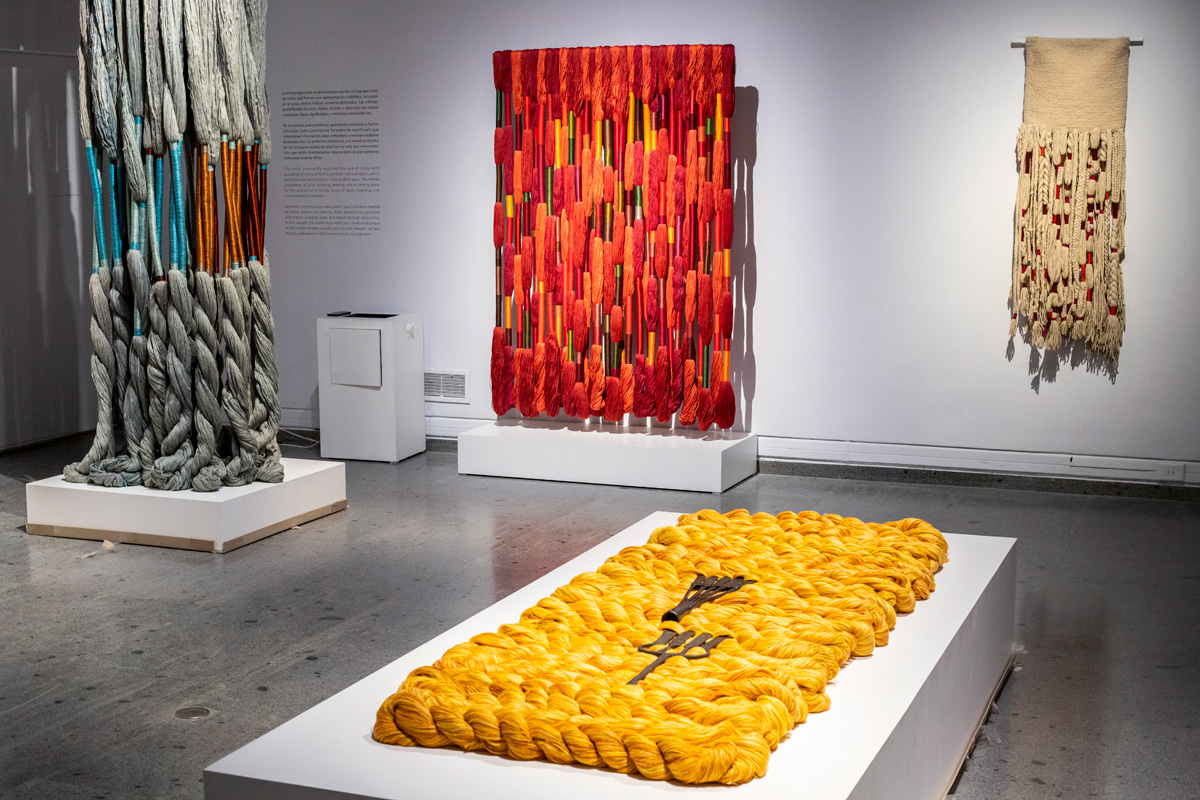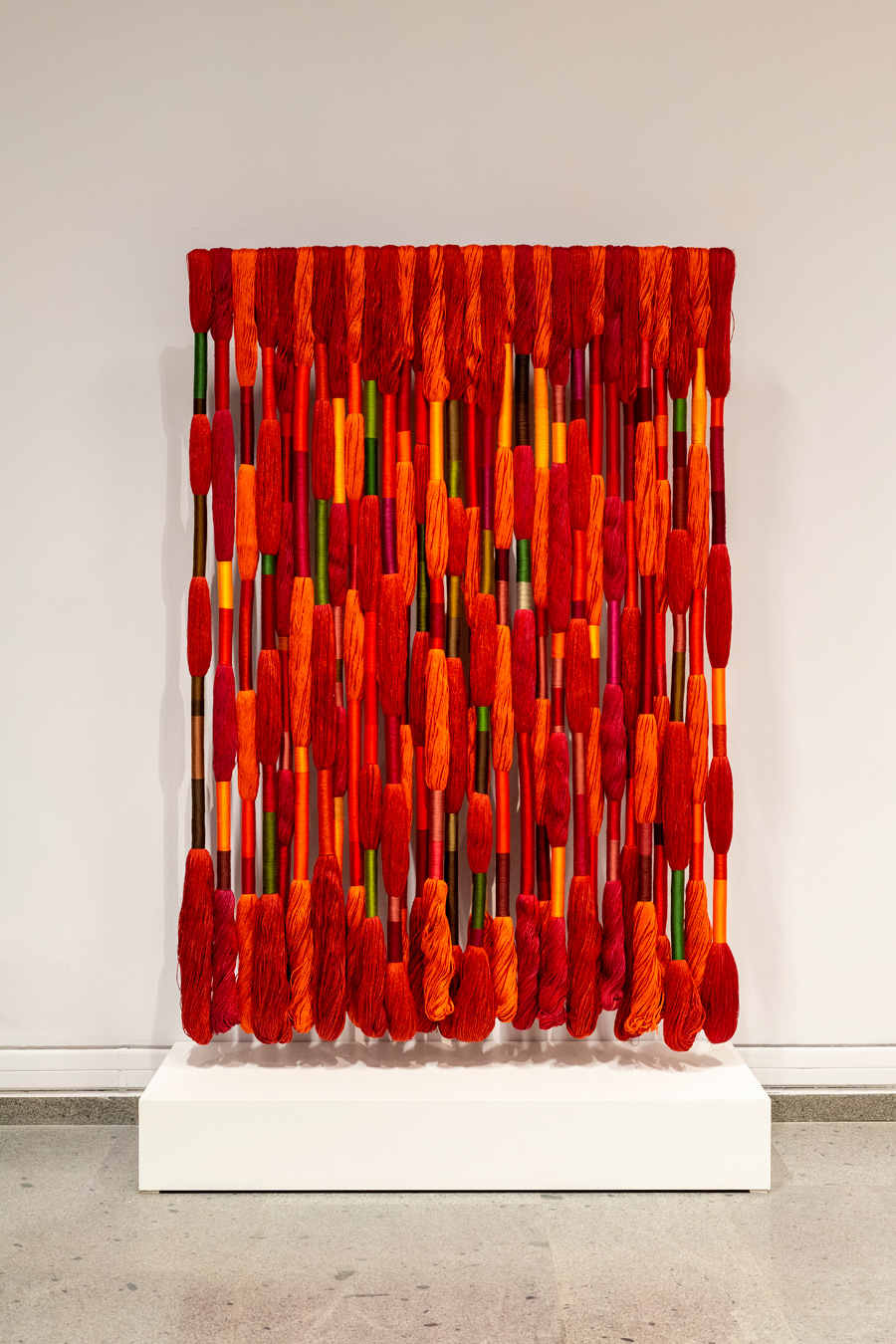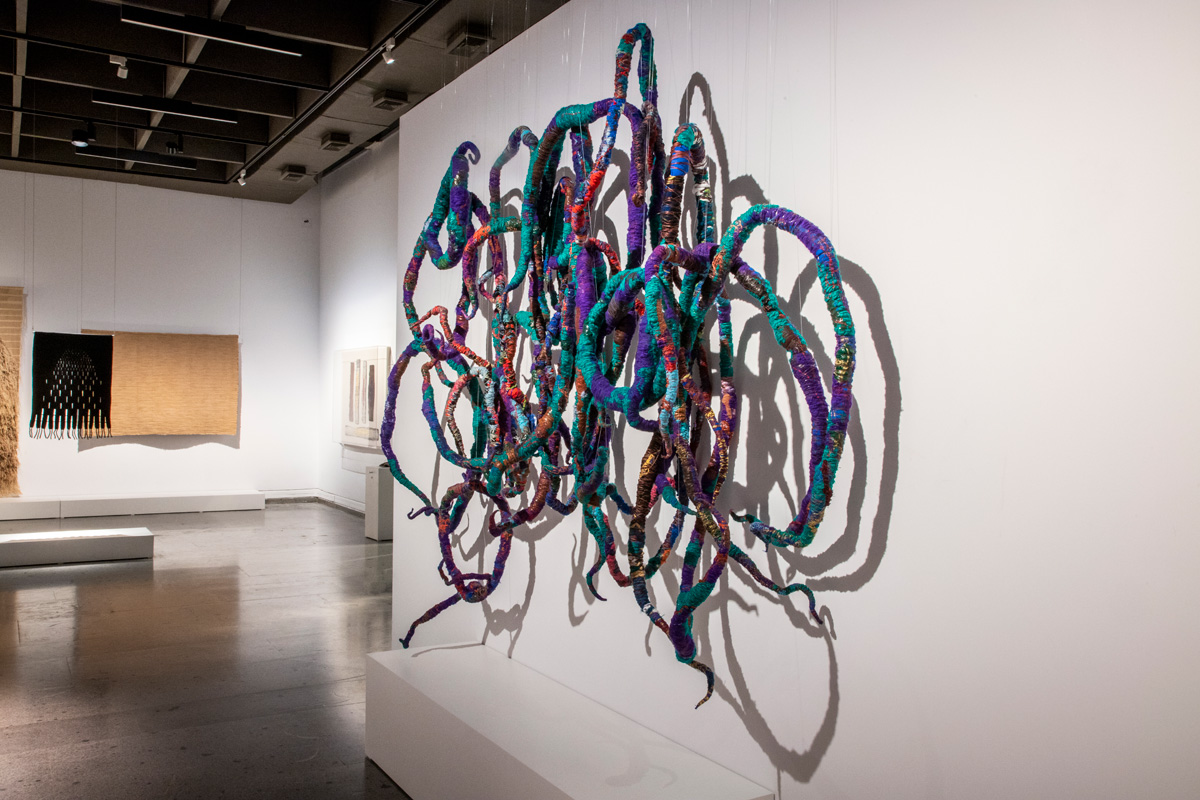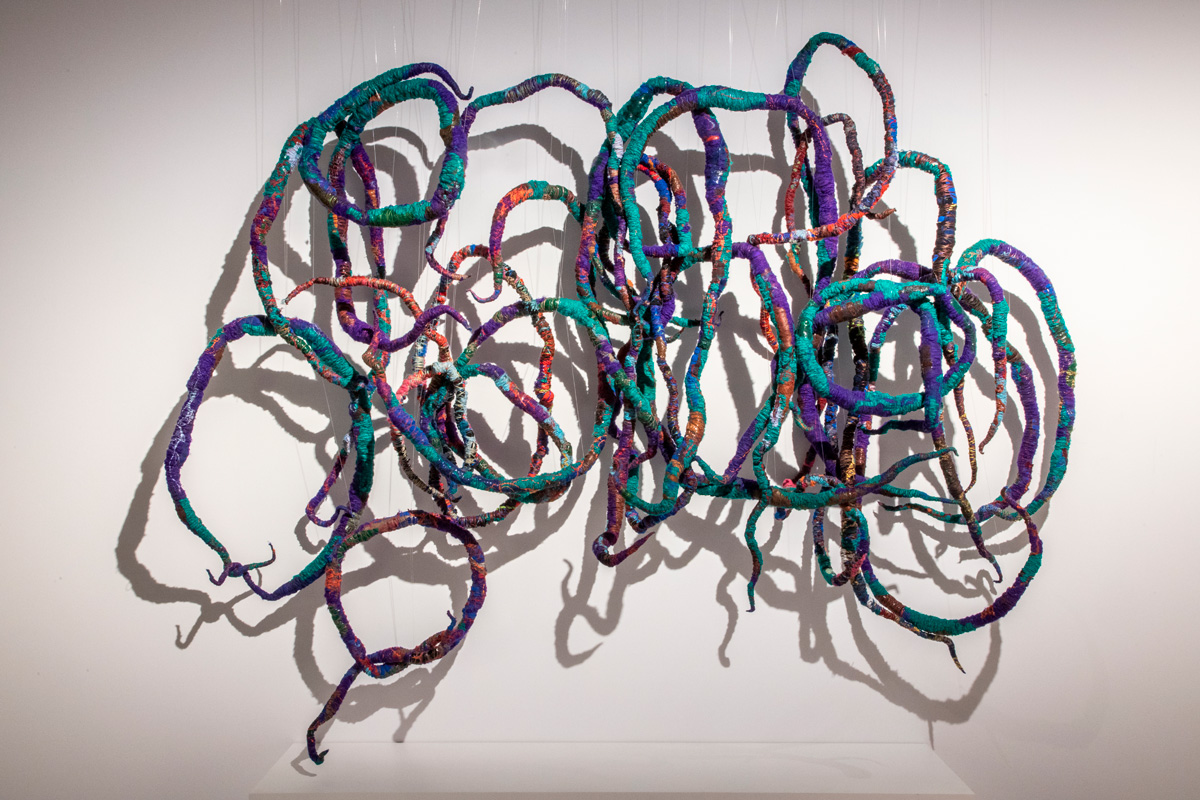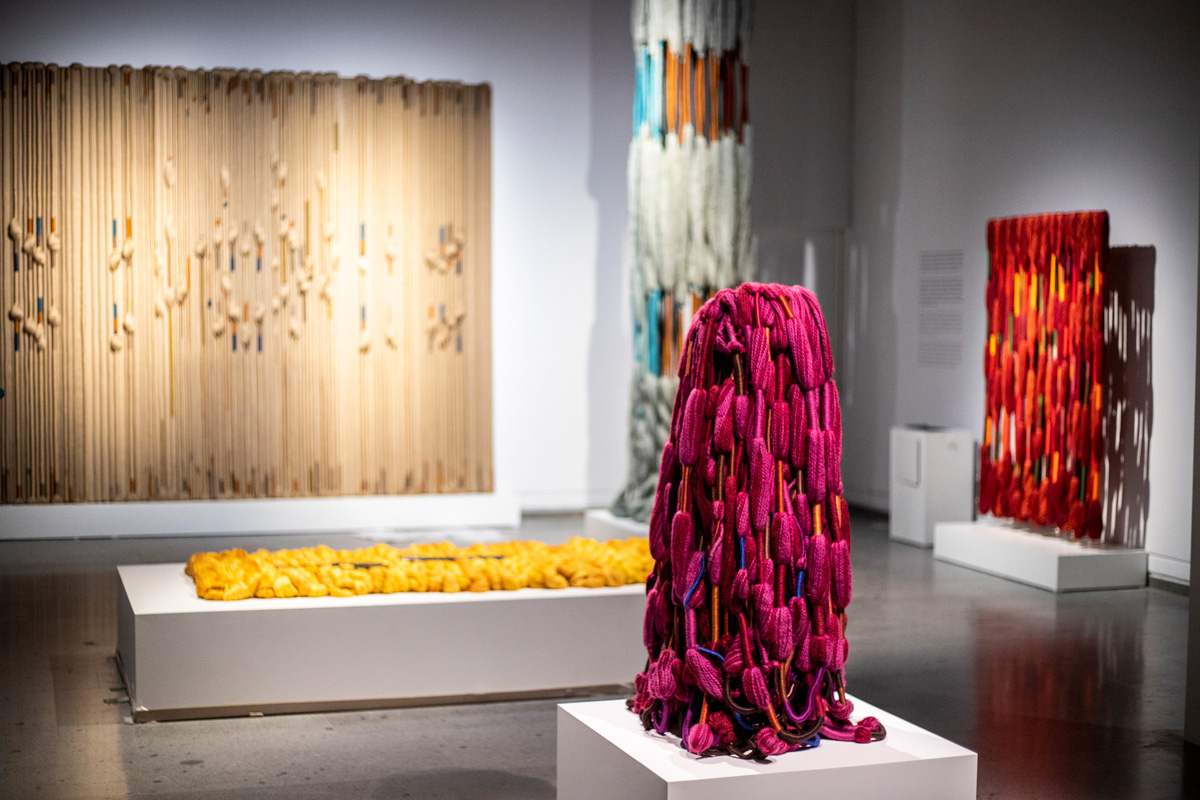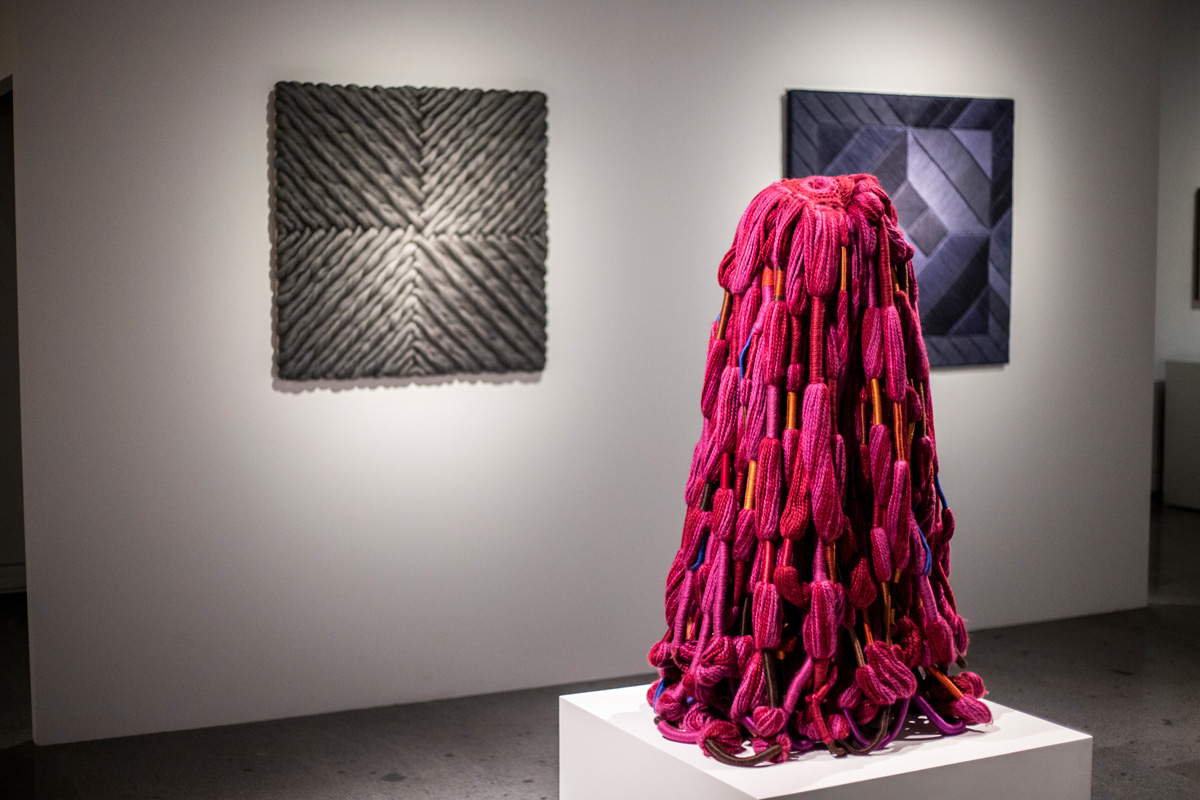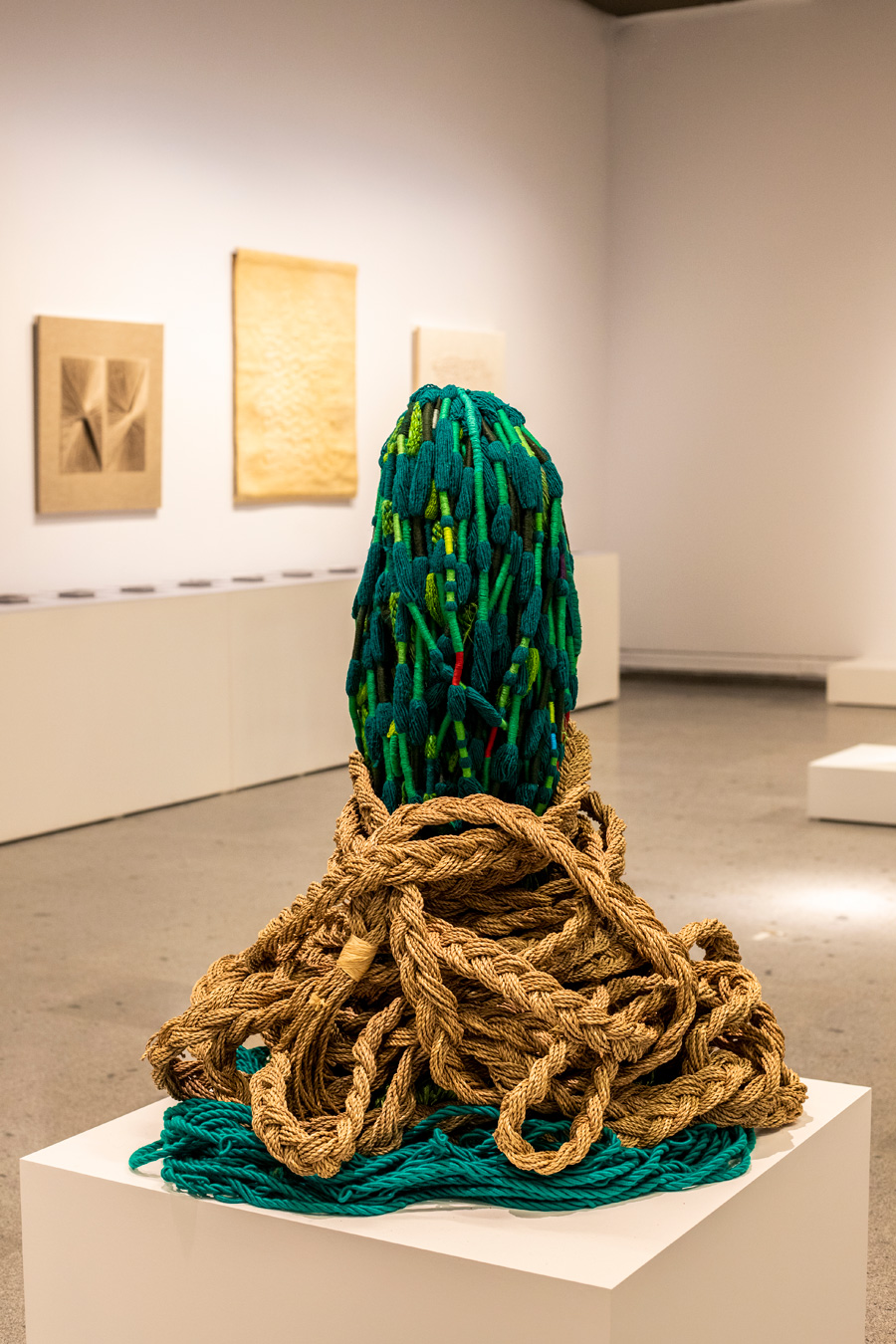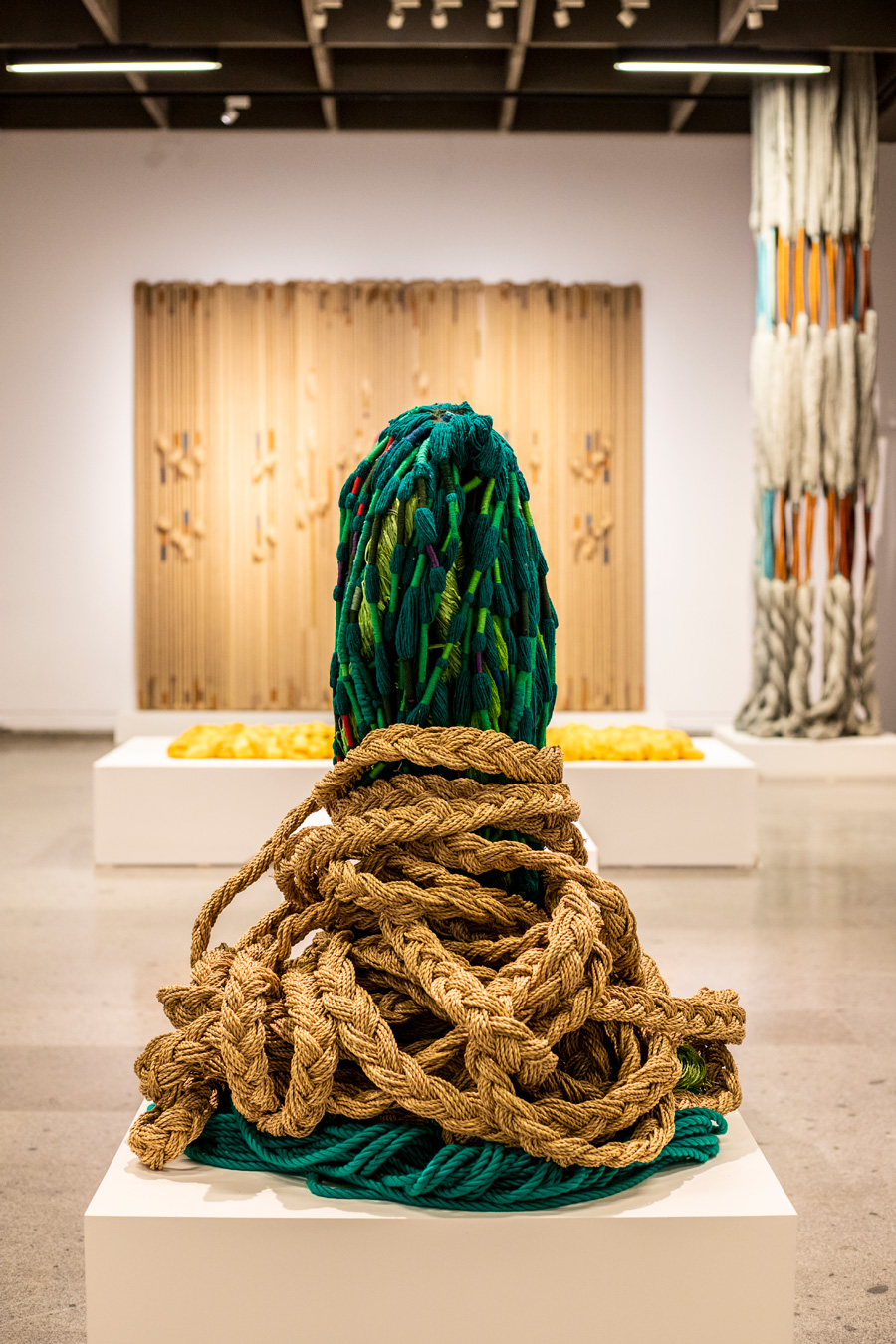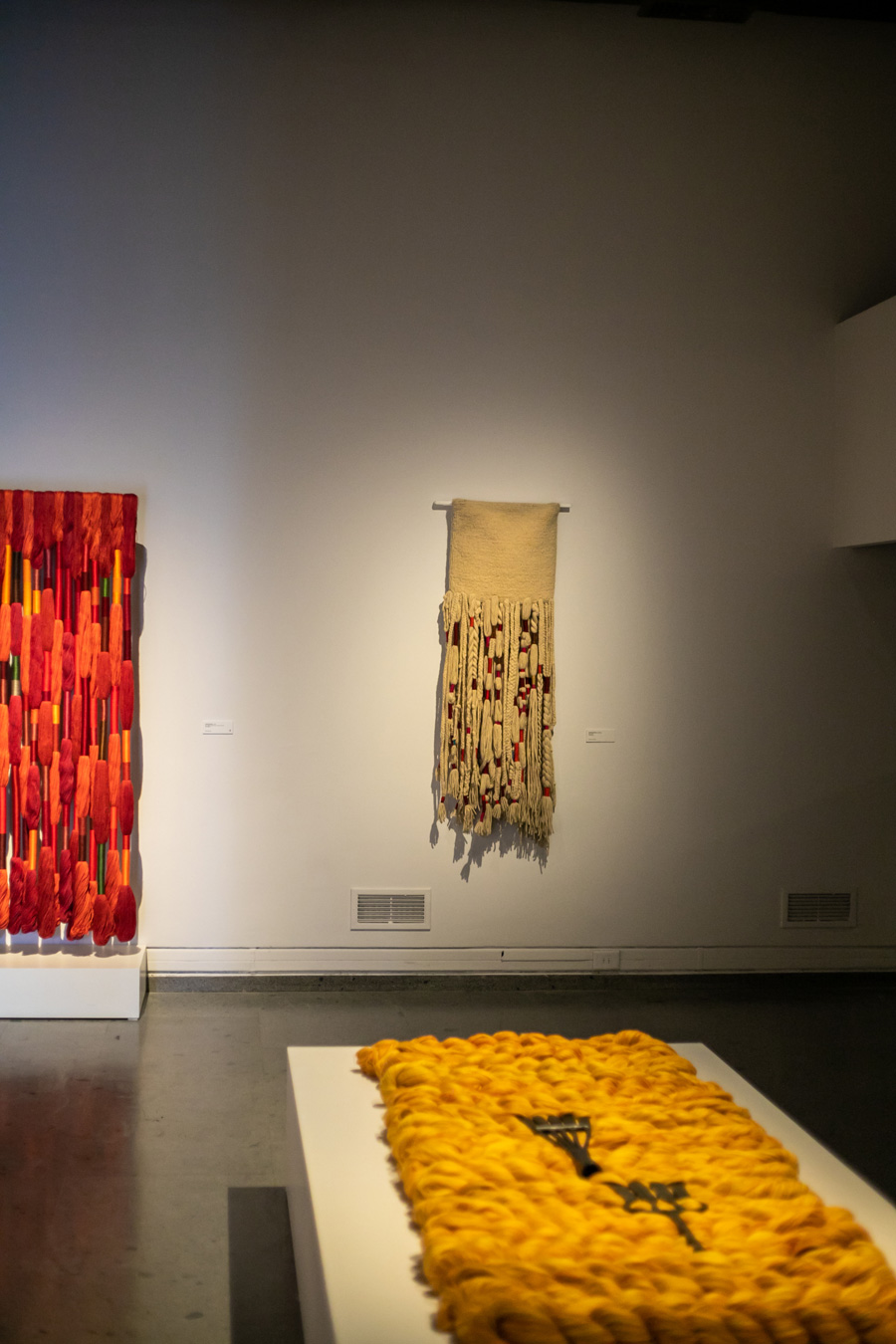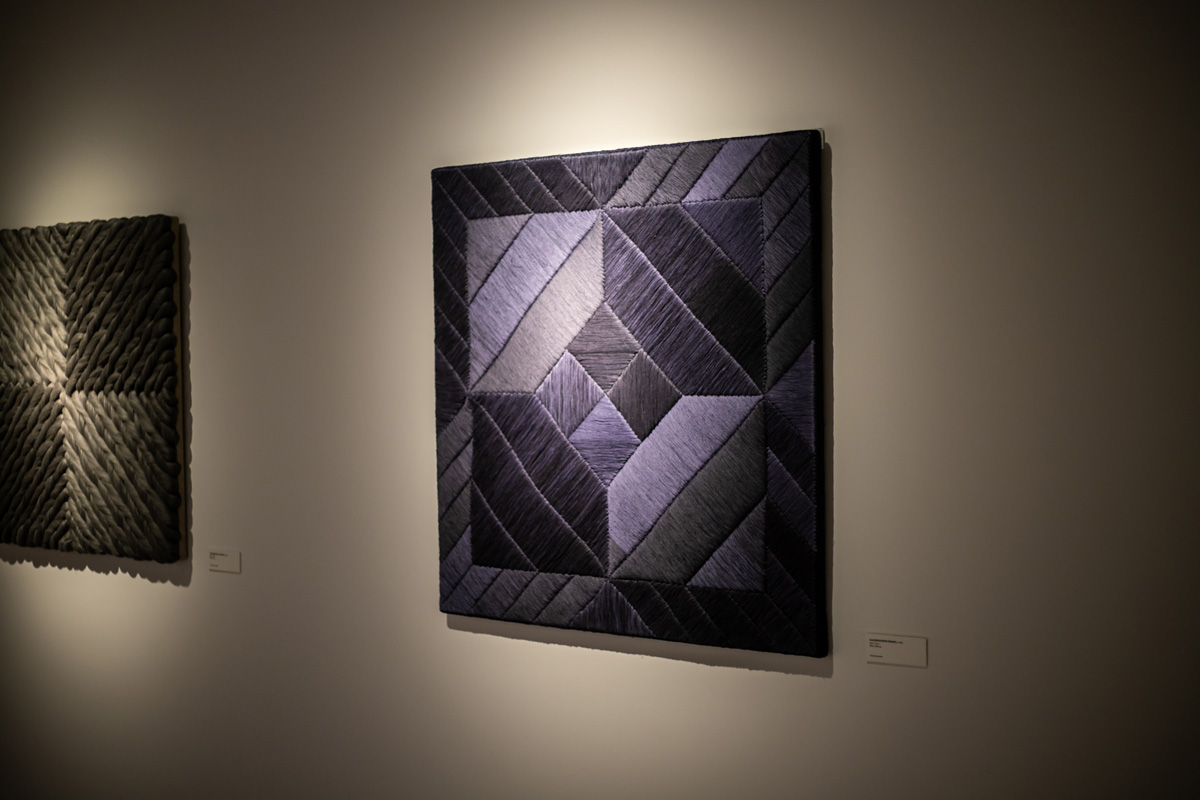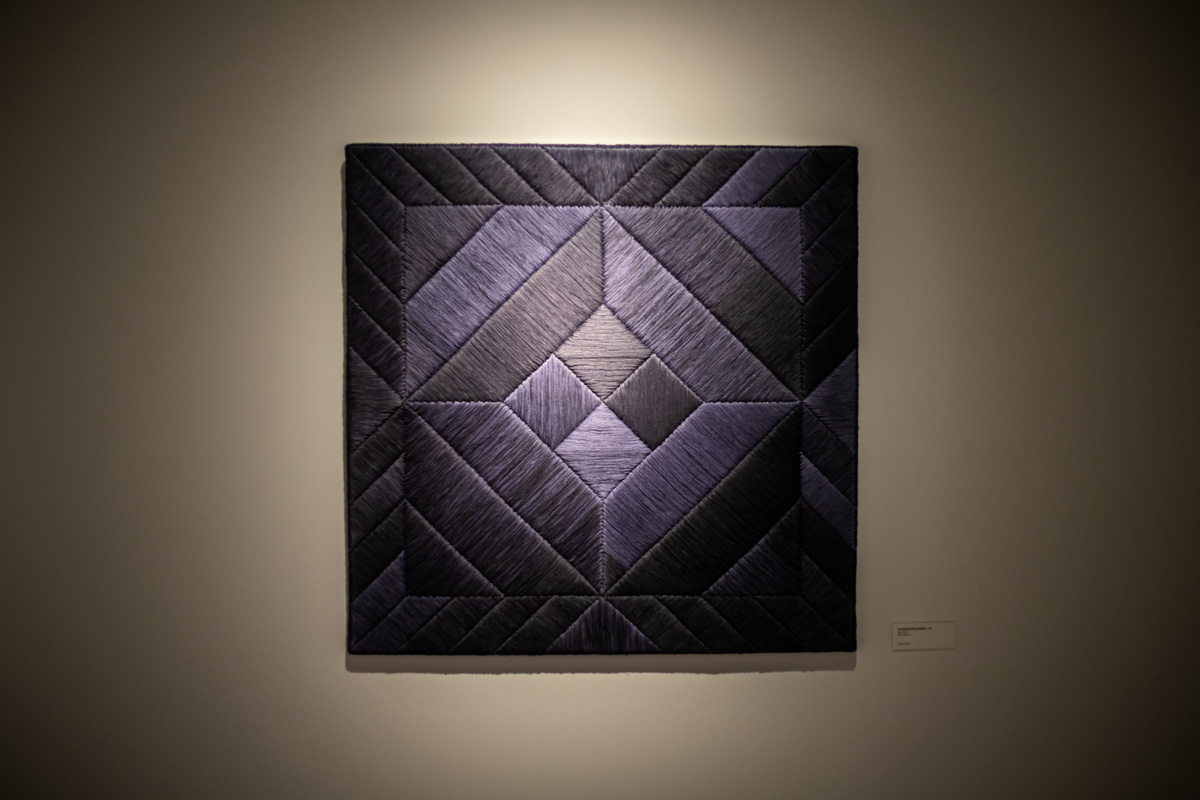Reencounter – 2019
Yarn, the essential unit
Yarn is the essence of a textile. A thread is line, fiber, and color. It is the fundamental unit for articulation both in pre-Columbian textiles and in Hicks aesthetic language. A yarn is formed when two threads are twisted together. In turn, each thread is a bound of fibers ordered by rotation. Color combinations in sequences, twists, and cords are complemented by variations in saturation, light, and hue.
In Hicks’ art the visual is haptic and the haptic is visual. Her associative art practice consists of touching fibers and transforming them through the delicate transferences of meaning. The main link between Hicks’ artwork and pre-Columbian textiles lies in the following quality: the two art forms are mediums of communication, record-keeping, and memory.
The artist incessantly explores the use of cords with groupings of knots to form a symbolic representation, which symbolize abstract numbers in the Andean quipu. The infinite possibilities of color, spinning, twisting, and re-twisting allow for the expression of a wide range of ideas, meanings, and communicative contexts.
Geometry and structure were used in pre-Columbian textiles as formal bearers of meaning. Both elements encapsulated information, complex ideas, and beliefs through abstraction. In this respect, the intellectual intent and creative technique of the ancient Andean weavers are not only relevant, but also directly applicable to Hicks’ communicational approach.




































